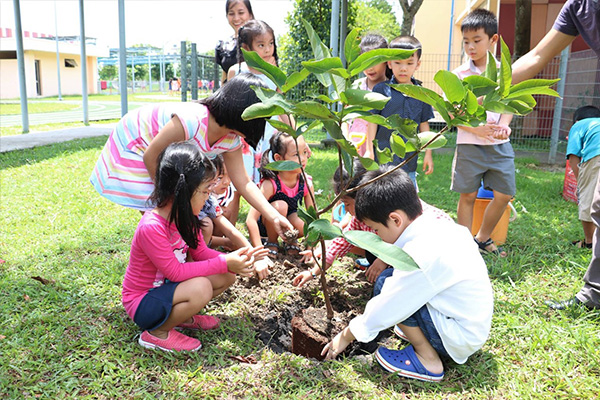GIS
- Posted on
- No Comments
- Faculty Blogs
Why are schools in a greener environment better?
Schools that are surrounded by trees in all direction create an environment which makes both the teachers and students more comfortable, relaxed, mentally, and more-focused on learning. Such a situation also prepares students and teachers less prone to illness. It is an undeniable fact that the type of school building or the infrastructure is not just the setting for learning, but also plays a vital role in enhancing or hindering the learning process. Time and again, it has been proven that schools in a greener environment improve the wellness, health, and academic performance of the students. Now let us discuss some of the main benefits of sending your kids to schools that are situated in a greener environment.Less exposure to toxins: In today’s environment, there are lots and lots of toxins in different forms. These toxins may be found in the water, air, ground, and even food. When these toxins get contact with young children whose immune system is not fully developed, they may cause serious consequences. There are many reports which have shown that lead and other heavy metal contamination in drinking water causes multiple health problems to the students. So the schools need to test the drinking water source provided to the students. Not only these, many chemicals which are found in pesticides and other cleaning products are also found not safe for inhalation and have the potential of causing skin allergies. These points make it clear that sending your kids to schools situated in a greener environment is of much better than those located in cities or crowded areas.
Air quality: Many researchers have proven that students in developed countries miss approximately 14 million school days due to breathing problems like asthma. Students studying in schools that are situated in industrial areas have higher chances of suffering from multiple breathing problems due to the polluted air. So the schools need to be located in a greener environment. Schools that are surrounded by trees around have better environmental conditions inside and make the students active throughout the day. Such a situation does not suffocate the child and enhances their learning capacity too.
Studies proved the relationship between students’ welfare and the surroundings of the school. Schools with poor ventilation increase the risk of diseases, including multiple daily problems like fatigue, headache, drowsiness, allergies, etc. which ultimately lowers the academic performance of the students. As the indoor air quality of schools is improved, the health of both teacher and student will be better, and this will lead to better academic performance and all-round well being. Students also perform well in mathematics if they stay in a healthy environment.
Noises: Students need to hear what the teachers say very carefully. And if the students are not able to listen to what the teachers say correctly, they would not learn anything. So it is mandatory to optimize classroom sound for the children to hear what the teachers say. Studies have proven that a low background noise level along with high speech quality enhances the learning process of the students. And it is also shown that students learning in a classroom with a low noise level develops good memory power and are more attentive. Schools situated in a green environment lessen the distraction rate, thereby making the students more attentive to studies.
More comfort: In hot summer days, not all schools can afford ACs in every classroom. So it will make students feel discomfort and fatigue quickly during these days. In such a condition, students won’t be able to concentrate on their studies. But a comfortable temperature not only enhances the learning process of the students but also make them more active and energetic throughout the day. Consider a school surrounded by trees; the temperature will be automatically regulated. Students will enjoy shades in summer, along with fresh air, which will make them more energetic.
Lighting: Schools situated in cities need artificial light throughout the day. These artificial lighting not only consumes energy and cost more but also affects the sight of the students in the long run. It is a proven fact that without enough natural light, a child’s melatonin cycle is disrupted. As this cycle gets upset, the child’s alertness during school hour is also hindered. Exposing to natural light as in sunlight has a significant positive effect on the performance of the students. Moreover, daylight also plays a vital role in the overall development of young kids.
GIS is one of the best residential schools in Delhi NCR. Situated in a lush green environment with well-developed infrastructure and playground, your child is in safe hands at GIS. GIS plays a massive importance in the overall development of the students and not only the academic aspect. To develop every aspect of the students, including their health, GIS, make sure to plant trees all around the campus and provide classrooms with adequate ventilation. Moreover, the drinking water supplied to the students is also well tested from time to time to check the unwanted minerals and other particles present in it.





